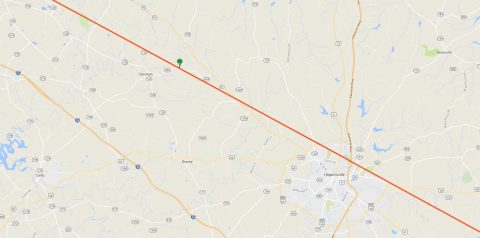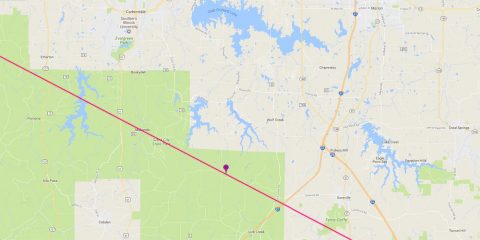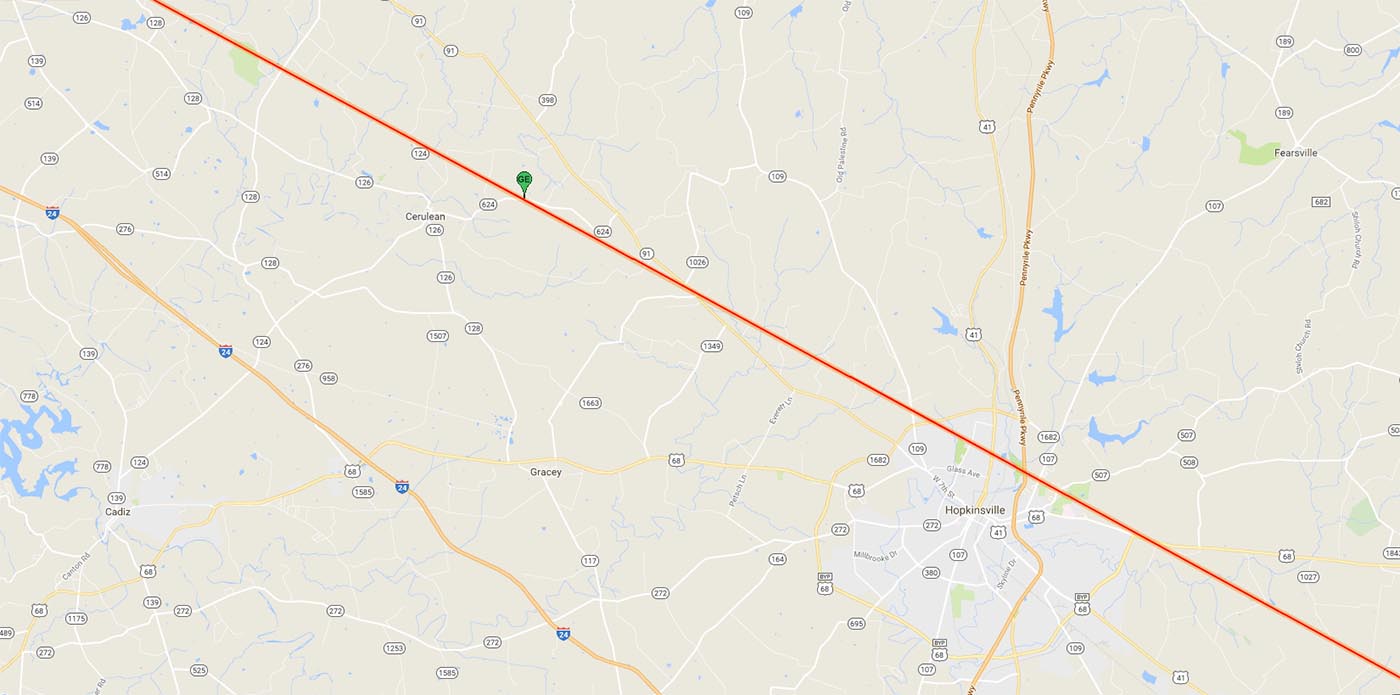Written by Lina Tran
NASA’s Goddard Space Flight Center
 Greenbelt, MD – During the total solar eclipse on Monday, August 21st, 2017, the Moon’s shadow will cross the United States from Oregon to South Carolina in just an hour and a half. But the shadow won’t travel across the country at the same speed. Instead, its speed will vary — and depending on location, so too will the duration of totality, the fleeting minutes when the Moon completely covers the Sun.
Greenbelt, MD – During the total solar eclipse on Monday, August 21st, 2017, the Moon’s shadow will cross the United States from Oregon to South Carolina in just an hour and a half. But the shadow won’t travel across the country at the same speed. Instead, its speed will vary — and depending on location, so too will the duration of totality, the fleeting minutes when the Moon completely covers the Sun.
Two points along the shadow’s path are of particular interest to eclipse viewers seeking the longest-lasting totality: the point of greatest eclipse and the point of greatest duration.

But neither is necessarily greater than the other; with clear skies, any view of the corona — the sun’s pearly-white, ethereal atmosphere — should be spectacular. So, what is the difference between the two?
The point of greatest eclipse is where the axis of the Moon’s shadow passes closest to the center of the Earth. Since this is a strictly geometric concept, scientists use this point to compare different eclipses with each other.
For example, each eclipse on NASA’s list of past and future eclipses is described by the date and time at its point of greatest eclipse. The point of greatest eclipse for the August 21st total solar eclipse will see 2 minutes, 40.1 seconds of totality. The closest towns to this location are Cerulean and Hopkinsville, Kentucky, which each will experience 2 minutes, 40 seconds of totality.

On the other hand, the point of greatest duration is where totality lasts the longest along the very center of the path of totality.
The greatest duration during the August 21st eclipse is 2 minutes, 40.2 seconds near Makanda, Illinois. Carbondale, Illinois, is the closest large town and will experience 2 minutes, 37 seconds of totality.
Even though the Moon’s shadow travels at the same speed in space, the shadow’s speed — and totality — varies in different places based on geometry between Earth and the Moon. The Moon casts its shadow not on a flat surface, but a sphere — Earth.
Toward either end of the path of totality, Earth curves away from the Moon, so the shadow hits the surface at an angle and elongates, covering a longer distance over a given time period. Near the middle of the path of totality, when the shadow hits Earth head-on, the shadow covers less ground in the same amount of time, so totality lasts the longest.
For more information on the upcoming total solar eclipse, visit: https://eclipse2017.nasa.gov



